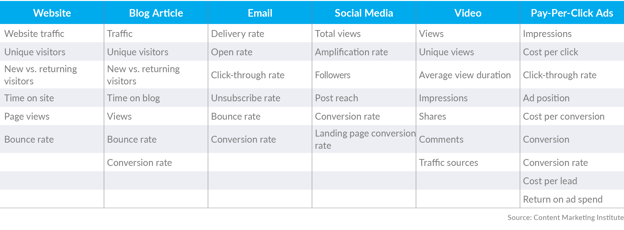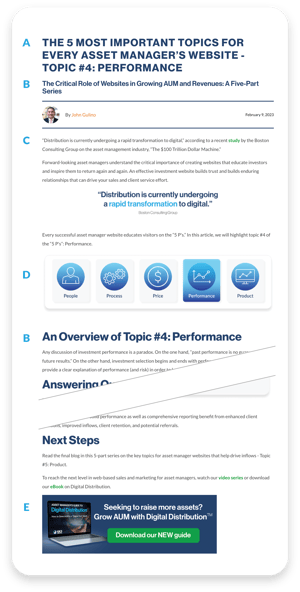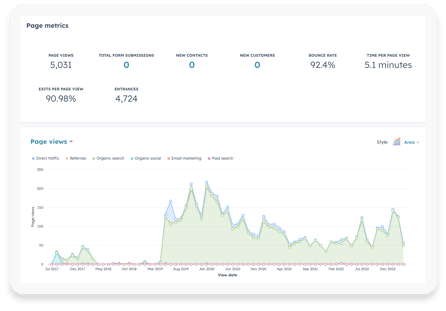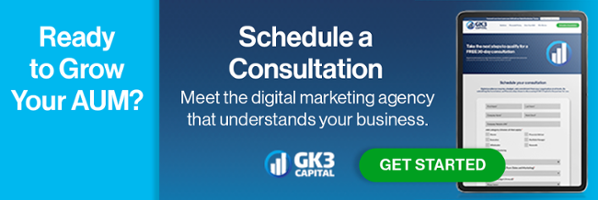
By measuring data and the metrics of how your content is performing, you can make enhancements that improve your ability to attract prospective clients and inspire them to take action. In this blog, we take a closer look at this final step of the content creation process: OPTIMIZE.
Step 8: Optimize
Optimizing content is a key part of our content creation process. But how do you know what to optimize to improve performance?
Technical, Editorial, and Creative
- Some optimization tasks are technical. Did you format your content to provide both a great mobile and desktop experience? If you include links, do they point the visitor to the right place, such as the correct page on your website?
- Some optimization tasks are editorial. Can you write a better headline to grab your target buyer’s interest? Did you include the correct keywords to rank high in search results? Most importantly, does the text serve your client’s needs first rather than yours?
- Some optimization tasks are creative. Is your content visually engaging to maintain your reader’s attention? Does it match your branding? Can you include quality videos, and a proven strategy to increase traffic and links?
Begin with the end in mind
Before you begin creating content, you need to know what you want your content to do. What’s your goal? There are two basic goals for content: Attract viewers and Inspire action.
Attract Viewers
When you create content, you want as many of the right people as possible to see it. Viewership and visibility are important for search engine optimization and digital advertising. Metrics include how content ranks in search results or the number of impressions earned by a digital ad.
Inspire Action
You also want these people to take action, and begin a dialogue or relationship with you, so they may eventually become a client.
When a prospective client takes action based on your content, such as adding their name and email address to your newsletter list or exchanging contact info for a valuable download, that is called a conversion.
Optimize for conversions
For asset managers, conversion is a key goal. Prospective clients can be identified via databases that show the registrations and affiliations of potential clients, and the types and sizes of assets they manage. Other industries are less likely to know who their future clients may be.
What is Measured is Managed
Numbers drive performance in the asset management industry. Similarly, numbers are fundamental to analyzing the effectiveness of content.
Below are the key metrics we use to measure and monitor the effectiveness of different types of content:

Experimentation: The Content Laboratory
During the experimenting and testing process, we seek to discover what resonates with our target audience. The goal is to find what content works best.
Keep in mind that not all content will work as expected. You may discover that certain topics resonate best, attract website visitors, and lead to conversions the moment the reader provides their contact details because they want more content from you or wish to engage in a conversation.
Or, you may discover that changing the color of a banner on an online ad dramatically increases conversion rates.
Track the data once content is published or distributed. See what resonates. Then adjust accordingly. But test only one thing at a time. Otherwise, you can’t know what’s driving different results. A/B testing can be a powerful tool to optimize certain types of content.
How to Optimize a Blog Article
A. TitleYour blog title determines if someone reads your article. At GK3, we use qualitative and quantitative approaches to optimizing blog titles. Qualitative approaches focus on clarity and answering “who, what, why” for the reader who wants to know “what’s in it for me” before deciding to read an article. Quantitative factors evaluate character count, number of words, type of words, and keyword inclusion.
B. SubheadsOrganizing your content with subheads and lists makes it easier for readers to follow and makes it easier for search engines to evaluate your content and rank you higher.
C. TextFor maximum readability, use short sentences and simple words. Then vary sentence length for variety. Complex language and jargon may sound professorial but sends readers away.
D. VisualsAdding visuals, such as photos, illustrations, charts, graphs, and tables increases user engagement. Statistics show that more visuals are better.
E. Visual CTAsConsumers of investment content are looking for solutions and answers. They’re ready to take action. To serve your audience and guide them to their next step, include a well-crafted and visual call to action. An effective CTA is key to achieving the business results you seek from your content.
Also remember to add alt-tags and alt-text to your photos and visuals and add title tags for your headlines. These will help search engines rank your articles higher.

Continuous Improvement
Content optimization is an ongoing process. At GK3 Capital, we add structure to the process through quarterly reviews. Each quarterly review includes detailed performance statistics on each type of client content and goals for the upcoming quarter.
Views and Conversions
We start by focusing on the two key metrics for content: Views and Conversions.
For views, we highlight relevant blog and site performance across sources for each month and the calendar quarter. We will then establish goals for the upcoming quarter.
For conversions, we once again highlight the performance of relevant content across channels and sources and use that performance to determine goals for the upcoming quarter.

Content That Resonates
Optimization also requires that we review what type of content resonates with your audience, such as premium content offers (PCOs) like eBooks, Blog articles and Videos..
We often measure resonance by understanding clickthrough rate (CTR). While the average CTR across industries is 1.9%, GK3 Capital content often sees an average CTR of 4% to 6%.
Compounding Results
As your content library grows, your opportunities to optimize results will also grow. With more data, you will become more proficient at optimizing the effectiveness of your content. You will identify your top-performing content and themes and make them even better. You will even be able to update and improve older content. The lessons learned over time will enhance your content creation process and can increase and accelerate critical business results.
Conclusion
This concludes our series on the 8 Steps to Creating Great Content that Attracts New Investors and AUM. We trust you have found this information valuable as you evaluate your content creation process. If you would like a complimentary copy of the eBook, you can download it here.
And if our team at GK3 Capital can help answer any questions you may have regarding your digital sales and marketing strategy, simply schedule a call with us here at a time convenient for you.
John Gulino is the Founder and CEO of GK3 Capital LLC. Experienced in all facets of distribution including management, direct sales, training, and development, John has been fortunate to represent some of the industry’s most respected and innovative financial institutions and has consulted with many more of the top asset management firms in the industry on how to better align their sales and marketing efforts.
Topics:



